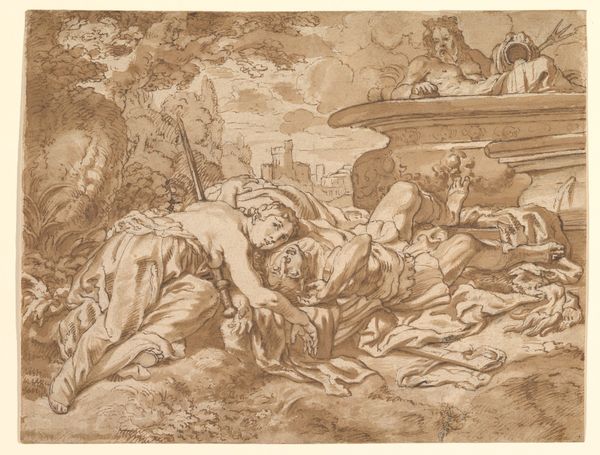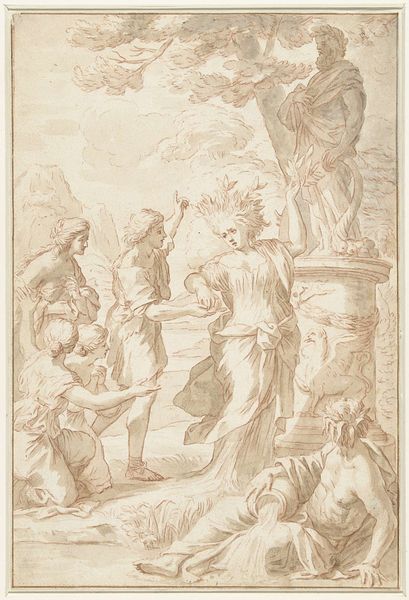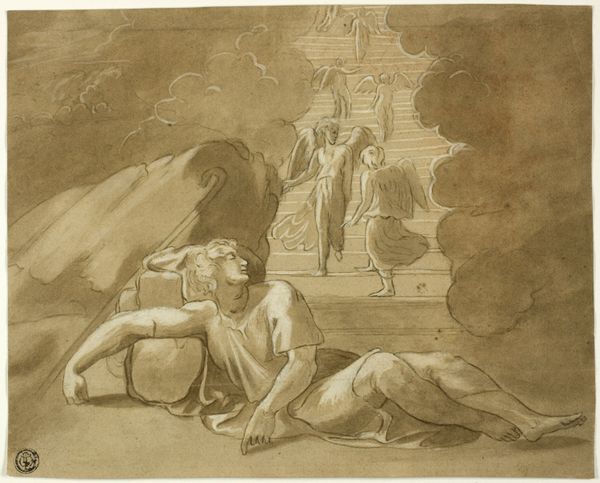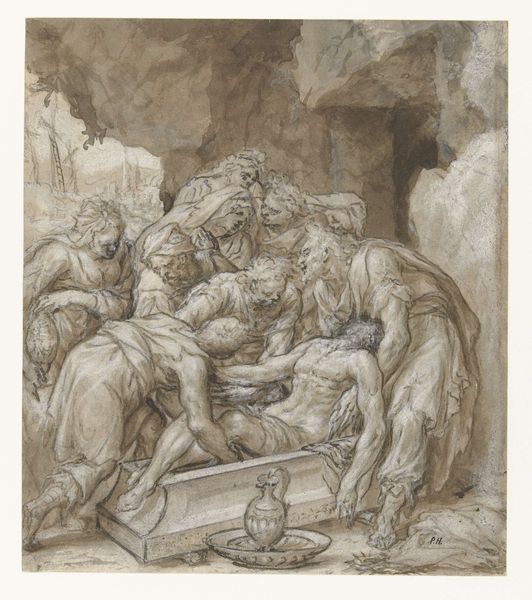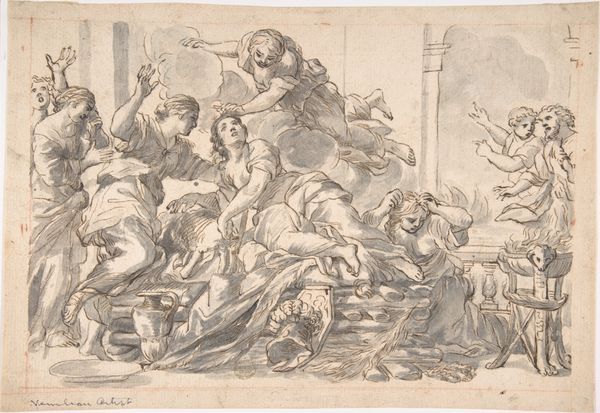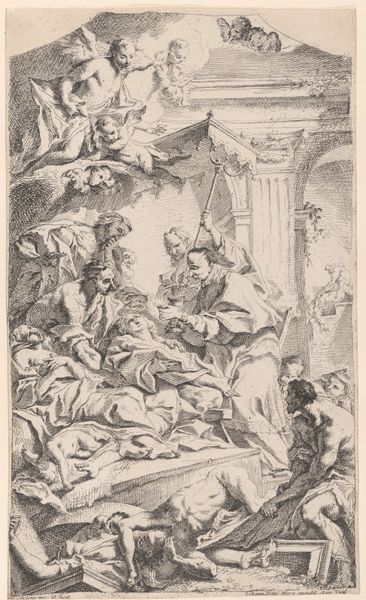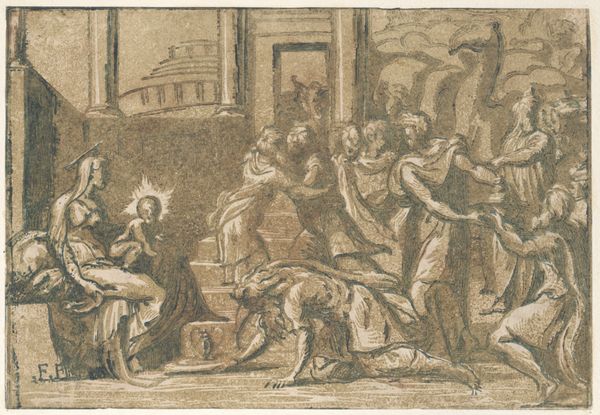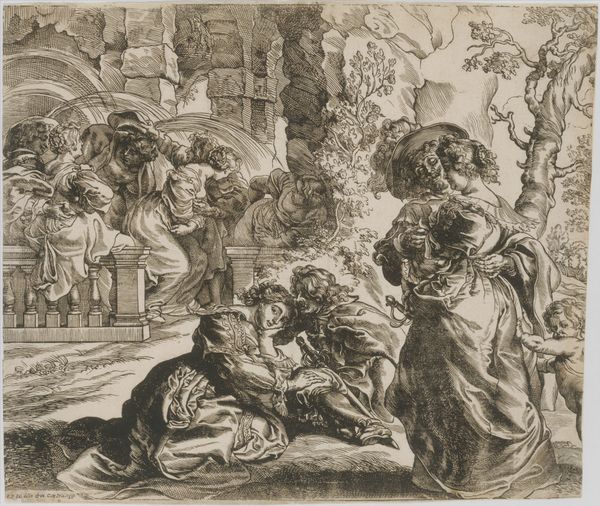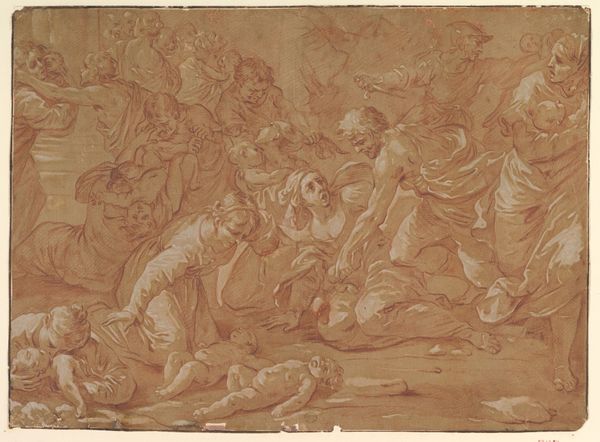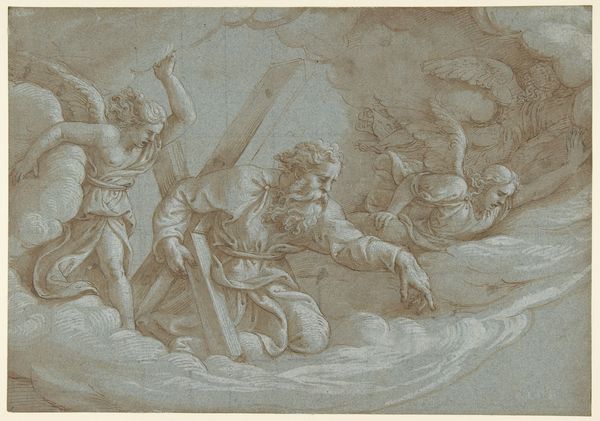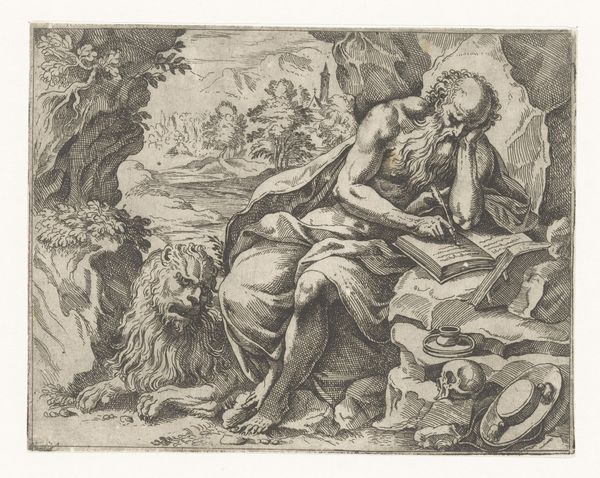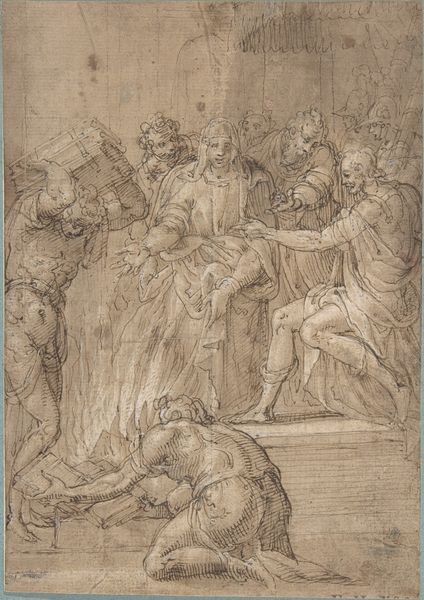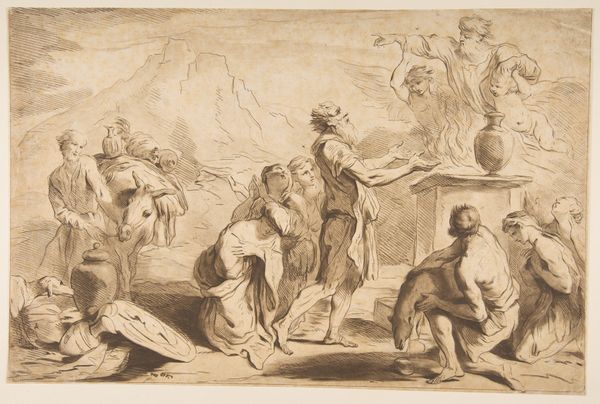
drawing, paper, charcoal
#
drawing
#
narrative-art
#
charcoal drawing
#
mannerism
#
figuration
#
paper
#
11_renaissance
#
charcoal art
#
charcoal
#
history-painting
Dimensions: height 180 mm, width 278 mm
Copyright: Rijks Museum: Open Domain
Editor: This is "Pyramus and Thisbe," a drawing in charcoal and paper attributed to Paulus Moreelse from around the early 17th century, currently at the Rijksmuseum. The sepia tones lend a somber quality, and the figures' dramatic gestures really pull you in. What stands out to you in this narrative scene? Curator: Immediately, I’m drawn to the fountain in the background. It is not merely decorative; the cascading water, reminiscent of tears, subtly reinforces the tragedy unfolding. But more interestingly, fountains are places of gathering, storytelling, of revealing secrets - do you think Moreelse is commenting on the public versus private nature of grief? Editor: That's fascinating! I hadn't considered the fountain beyond its aesthetic role. So you’re saying that its symbolic significance transcends its function as a background element? Curator: Precisely. Think of Ovid's Metamorphoses, where the tale originates; tales of love and loss were not just entertainment but moral instruction. See how the artist uses specific iconographic cues, like the carefully placed sword, to tell this story, connecting with a broader cultural understanding of love, sacrifice, and fate. What emotions does the sword evoke? Editor: I feel a strong sense of despair looking at that. Is that why it is so prominent within the whole picture? Curator: Its centrality underscores not only the immediacy of Thisbe’s despair but also the enduring power of the narrative itself. It is like a signpost of violent choices – the symbolic weight accumulates over centuries, a potent cultural reminder of the consequences of impulsive actions. Has the image shifted meaning in our eyes? Editor: Absolutely. Your explanation reveals the painting's multiple layers of meaning, beyond a simple illustration of a tragic story. The symbols of death, love, and the setting really carry much more importance than one may first presume. Curator: Indeed! Seeing artwork this way offers entry points into a complex network of cultural memory and symbolism. I will keep this interpretation with me going forward.
Comments
No comments
Be the first to comment and join the conversation on the ultimate creative platform.
